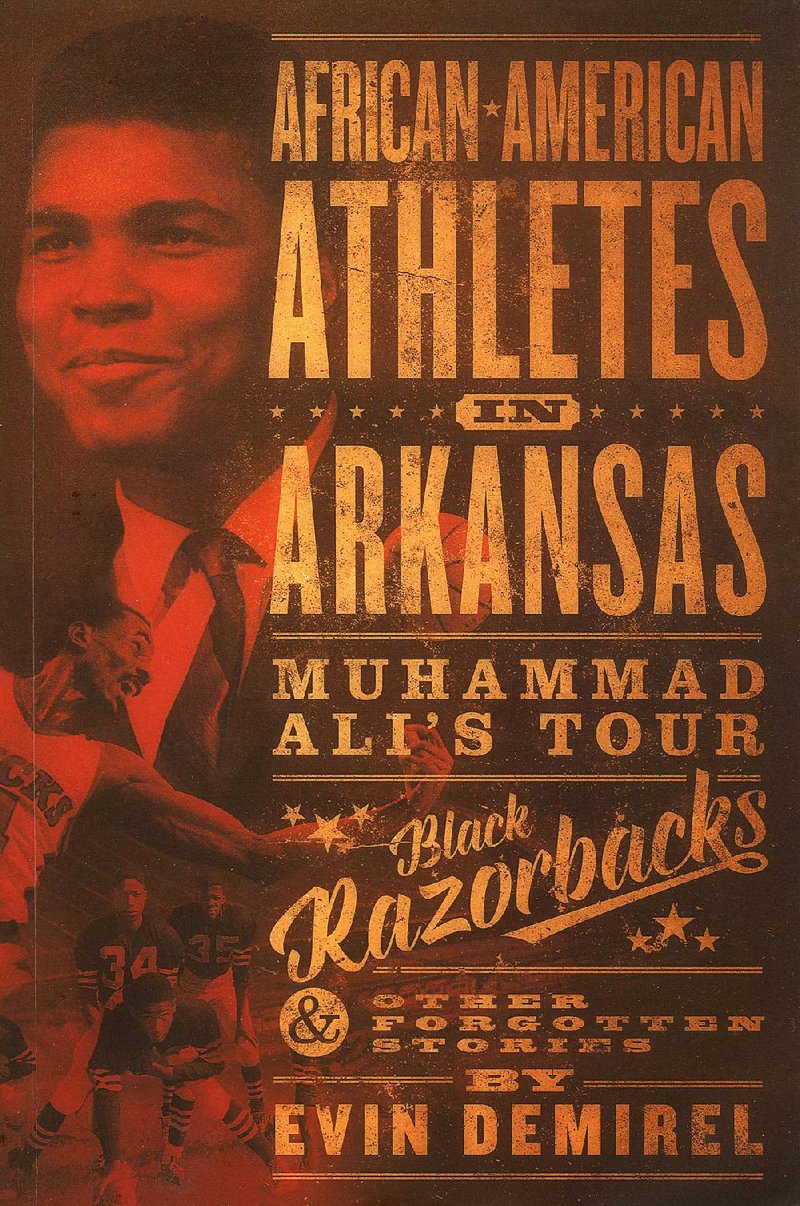Evin Demirel is one of my favorite young sportswriters.
If you pay attention to the subject, you've likely seen Demirel's work. He has written for a lot of publications and websites, The New York Times, Deadspin and this newspaper among them. A graceful writer who brings seriousness and an uncommon alertness to history and culture to his work, Demirel's chief concern is bringing fresh, under-reported stories to light. In the age of the hot take, where self-branding and marketing seem fundamental to the pursuit of any media career, Demirel stands out for his commitment to honest journalism.
So it's not difficult to recommend his new book, African-American Athletes in Arkansas: Muhammad Ali's Tour, Black Razorbacks & Other Forgotten Stories (ED Productions, $34.99 hardcover, $24.99 paperback). It is, as advertised, a deeply compelling survey of the heretofore neglected history of black athletes in 20th-century Arkansas.
It consists of 17 relatively short pieces, most of which were previously published in some form; "Ali in Arkansas," a somewhat longer, previously unpublished account of a few days in March 1969 when Muhammad Ali -- then barred from boxing and heavily in debt -- toured the state, giving five speeches in five days; the obligatory photo section and an introduction that irritatingly begins with the line, "A long time ago, as a young reporter ...." (Hmm. I seem to remember it as five or six years ago.)
Anyway, "Ali in Arkansas" might be eye-opening for those too young to remember the late 1960s, while giving those of us old enough to feel nostalgic for those days pause. Demirel notes that a previous visit by Ali -- then Cassius Clay -- to Little Rock in 1963 had gone unnoticed by the media, even though Ali was in the company of Malcolm X. The two men spent about 10 days recruiting potential Nation of Islam members in private homes in black neighborhoods. "Such a disconnect would speak to a form of social segregation and willful interracial ignorance that persisted in the early 1960s," Demirel writes.
While Ali's tour has been written about before (in 2013 Dan Durning published a detailed account of controversy surrounding opposition to a 1969 speech that can be accessed through his blog, http://www.eclecticatbest.com/), Demirel supplies some needed context and closes by noting the potential for further study, particularly of the Black Muslim movement in Arkansas. In a way, "Ali in Arkansas" feels like a book proposal. Demirel seems to be offering it to any interested historian, but I'm not sure there's anyone better equipped to take on the project. (Maybe Demirel and Guy Lancaster could collaborate.)
Elsewhere, Demirel writes about "the original black Razorbacks," an all-black team that wore cast-off University of Arkansas and Fayetteville High jerseys when they played against other black teams in a loosely organized regional league in the '20s and '30s. (They scrimmaged against white high school teams, sometimes at UA.) He surveys the black NFL players with Arkansas roots, reports on Nolan Richardson's induction into the Naismith Memorial Basketball Hall of Fame and interviews North Little Rock's Eddie Miles, the Scipio A. Jones High School star. Miles didn't become the first black player at UA, but ended up starring for Seattle University before playing nine years in the NBA. He writes about the somewhat unlikely friendship (and partnership) of Satchel Paige and Dizzy Dean.
"Fort Smith's Black Baseball Heritage" is one of the previously unpublished pieces, co-written with baseball historian Caleb Hardwick.
All in all, it's a fine effort but I do have a few quibbles. Demirel is at his best when he's analyzing and arguing. The first piece in the book, "Integrate the Record Books" -- first published on Slate.com -- is probably the strongest. It's an impassioned indictment of the whitewashing of Arkansas high school record books. But at other times, you can sense Demirel's caution as he defers to documents and sources. He sometimes uses the question-and-answer format when the reader might be better served by a few select quotes.
It's not really fair to criticize a (still young) reporter for being careful, but I know how good a writer an unleashed Demirel can be. I wish he'd allowed himself a little more freedom to comment and to be a little more discursive, that a little more of the book had captured the tone of his beautifully written introduction.
Still, it's good stuff. And it's a subject of interest to a lot of sports fans and those interested in ongoing American discussions of race. You can find the book in the usual places, or by going to Demirel's website, heritageofsports.com. He'll be talking about the book at 5 p.m. Thursday at the Bank of Fayetteville, 1 S. Block St., Fayetteville (sponsored by Nightbird Books) and at 6 p.m. Sept. 14 at the Clinton School of Public Service in Little Rock.
Email:
pmartin@arkansasonline.com
blooddirtangels.com
Style on 09/03/2017
